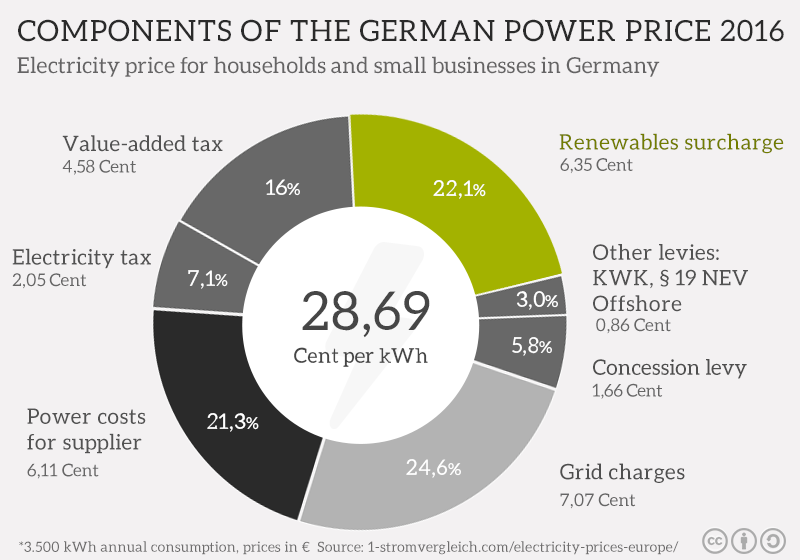The causes of the differences between European and US residential electricity rates
 The price of residential electricity has risen in lockstep with growth in renewable capacity in Europe but not in the US, and because of this European residential electricity rates are now roughly twice US rates. The reasons for the difference are a) that renewables surcharges are added to residential electricity bills in Europe but not in the US and b) that residential electricity bills in Europe have increased roughly in proportion to the amount of money spent on renewables growth. Residential rates in US states are set by state Public Utility Commissions that are legally obliged to set prices at levels that are fair to both consumers and providers. As a result the European bill payer pays for new wind, solar etc. while US renewables expenditures are offset by adjustments to the federal budget that are not itemized but which ultimately get paid by the US taxpayer.
The price of residential electricity has risen in lockstep with growth in renewable capacity in Europe but not in the US, and because of this European residential electricity rates are now roughly twice US rates. The reasons for the difference are a) that renewables surcharges are added to residential electricity bills in Europe but not in the US and b) that residential electricity bills in Europe have increased roughly in proportion to the amount of money spent on renewables growth. Residential rates in US states are set by state Public Utility Commissions that are legally obliged to set prices at levels that are fair to both consumers and providers. As a result the European bill payer pays for new wind, solar etc. while US renewables expenditures are offset by adjustments to the federal budget that are not itemized but which ultimately get paid by the US taxpayer.
A note before proceeding. Electricity bills in Europe typically contain renewable energy levies, fees, surcharges etc. that are paid to the electricity provider. How much of this ends up in the hands of the government is unknown, so in this post I classify these added costs as “charges” rather than “taxes”.
We begin with a map of the US “Lower 48” showing average state retail electricity rates in US cents/kWh in 2016. The map is dominated by blue colors, i.e. less than 15c/kWh. The data are from the US Energy Information Administration:
Figure 1: Average retail electricity prices in the US Lower 48 in 2016, US cents/kWh
And follow up with a map that covers roughly the same area showing average retail electricity rates by country in Europe in 2016. The color coding is the same, and rates are converted into US cents/kWh using the exchange rate at the time of converion (1 euro = 1.22 USD) so that they can be compared directly with the Figure 1 results. The data are from Eurostat.
…click on the above link to read the rest of the article…
